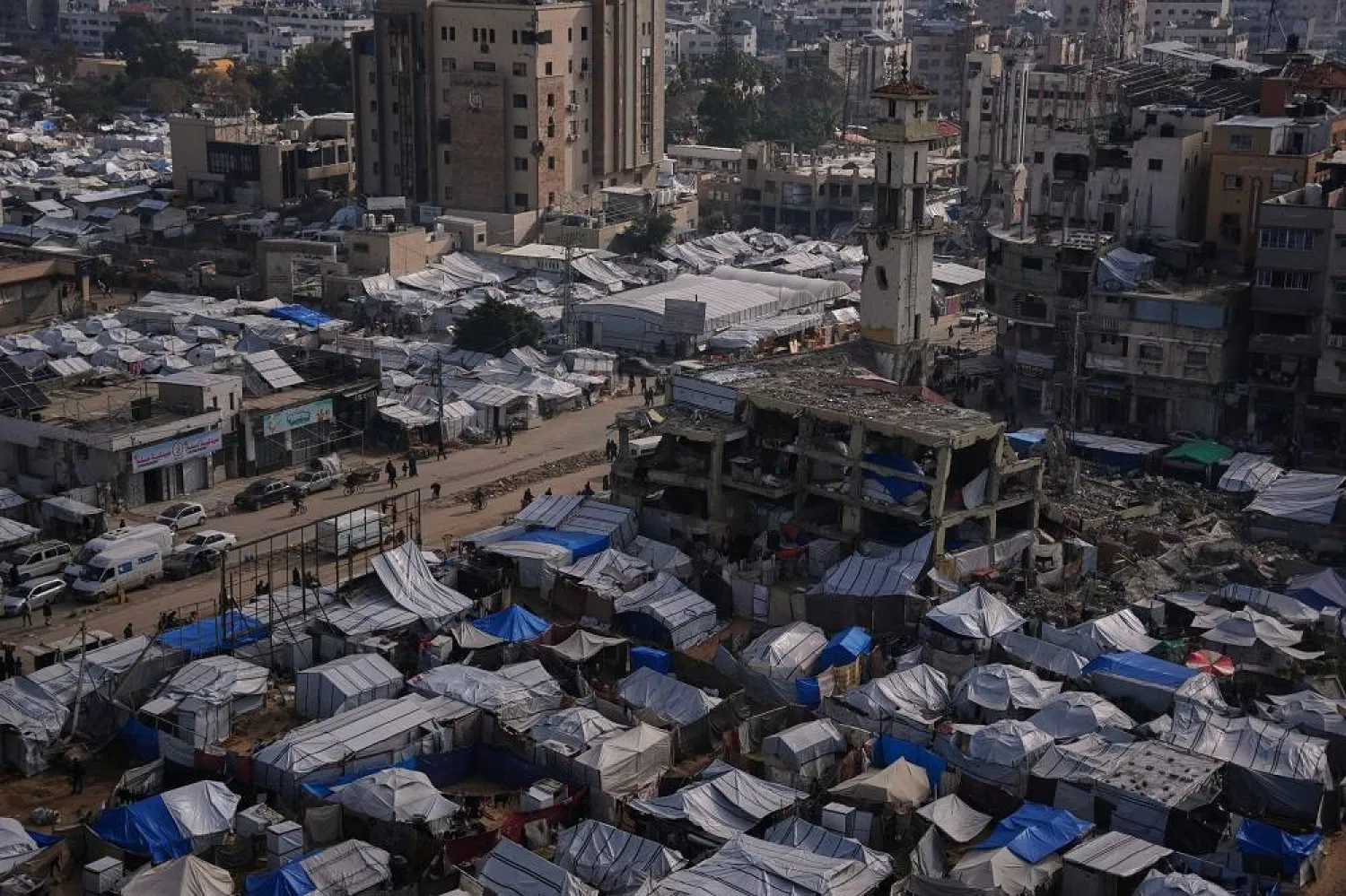Hamas was planning to storm Ashkelon Central Prison, close to the Gaza Strip, during the al-Aqsa Flood operation on Oct. 7 to free hundreds of Palestinian prisoners, in a mission that would have constituted another unprecedented blow to Israel.
In a special report, Asharq Al-Awsat revealed the details of the attack, which was supposed to target the prison but failed due to a technical error that led the attacking group to a nearby settlement instead of the prison.
Sources in the Palestinian factions in the Gaza Strip told Asharq Al-Awsat that one of the first groups affiliated with the elite unit of the al-Qassam Brigades had a mission to reach Ashkelon Prison, which contains hundreds of Palestinian prisoners in an attempt to liberate them, but the mission failed.
Sources close to the command of al-Qassam Brigades revealed that one of the groups consisted of 23 fighters and was explicitly assigned to reach Ashkelon Prison and free prisoners from it.
Another group's mission was to infiltrate a military base in the Ashkelon area before moving on to assist those already at the prison.
The sources reported that the group set off towards Ashkelon, crossed the border, and reached Kibbutz Yad Mordechai, where it clashed with Israeli security forces. They also arrived in the Netiv HaAsara settlement.
Initial investigations showed the mistake resulted from the designated guide in charge of GPS and maps, who made a directional error leading the group southwards.
Precise intrusion plan
According to the sources, the plan to storm the prison was carefully drawn up and in sufficient detail, and al-Qassam wanted it to constitute a solid blow to Israel, among other strikes on Oct. 7.
They explained that the plan relied on attacking the main gate of the prison using explosives and anti-tank missiles to blow up the gate and security positions along the prison fence, alongside rocket fire from Gaza towards the prison, with a signal from the group that it was there.
Ashkelon Prison is about 13 kilometers from the nearest border point in the northern Gaza Strip, southeast of the city.
The plan also relied upon the cooperation of the prisoners to rise and riot, which would assist the group.
However, the Qassam command did not receive any signals from the group that it had reached the prison, and it later became clear that it had arrived in Sderot, so it was instructed to wait.
The group engaged in clashes that lasted for hours with the Israeli police and army forces, which led to the Israeli forces losing control of the town after two al-Qassam groups met there.
It appears that this was one of the reasons for the continued clashes in Sderot for about three days after the Palestinian attackers barricaded themselves inside the police station and settlers' homes.
The sources confirmed that the al-Qassam Brigade did not abandon the plan to storm the prison.
Four members who participated in the storming of kibbutz Zikim were instructed to continue to try and reach the prison but were repelled by Israeli security forces before being targeted by air strikes.
- Support unit
The al-Qassam leadership had sent "elite" support units to the groups that led the storming of the border with Israel to facilitate their tasks, especially after their success in capturing dozens of Israelis.
The troop's support succeeded in killing, wounding, and capturing more Israelis and transporting those who were captured into the Gaza Strip.
The entire attack was aimed at capturing Israeli soldiers to push Tel Aviv into an exchange deal after it ignored four detainees held by Hamas. The operation later expanded in an unplanned manner.
Al-Qassam Brigades did not conduct any extensive investigation into the failure of its members to reach Ashkelon Prison due to the ongoing war for more than 130 days.
- Why Ashkelon?
In Israel, Ashkelon Central Prison is known as "Shikma Prison," number 713 in the Southern District. It was established during the British Mandate as a headquarters for the British Army stationed in the city to receive official British delegations.
After the defeat of 1967, it was transformed into the Ashkelon Police Station. With the escalation of the Palestinian national resistance against the occupation and a significant increase in the number of prisoners, the Israeli army leadership issued a military decree opening the Ashkelon prison.
With the increase of Palestinian resistance and operations against Israel, increasing the number of detainees among them, there was an immediate need to open a prison, and it was decided that this building would become a maximum security prison.
Ashkelon Central Prison began receiving Palestinian prisoners at the beginning of 1969. It holds about a thousand detainees. Each prisoner is allotted one and a half meters of space, and the rooms are often crowded. They are forced into compulsory labor, leading to riots and collective strikes.
The prison is famous for its damp cells that do not receive sunlight and the harsh, unbearable heat.









